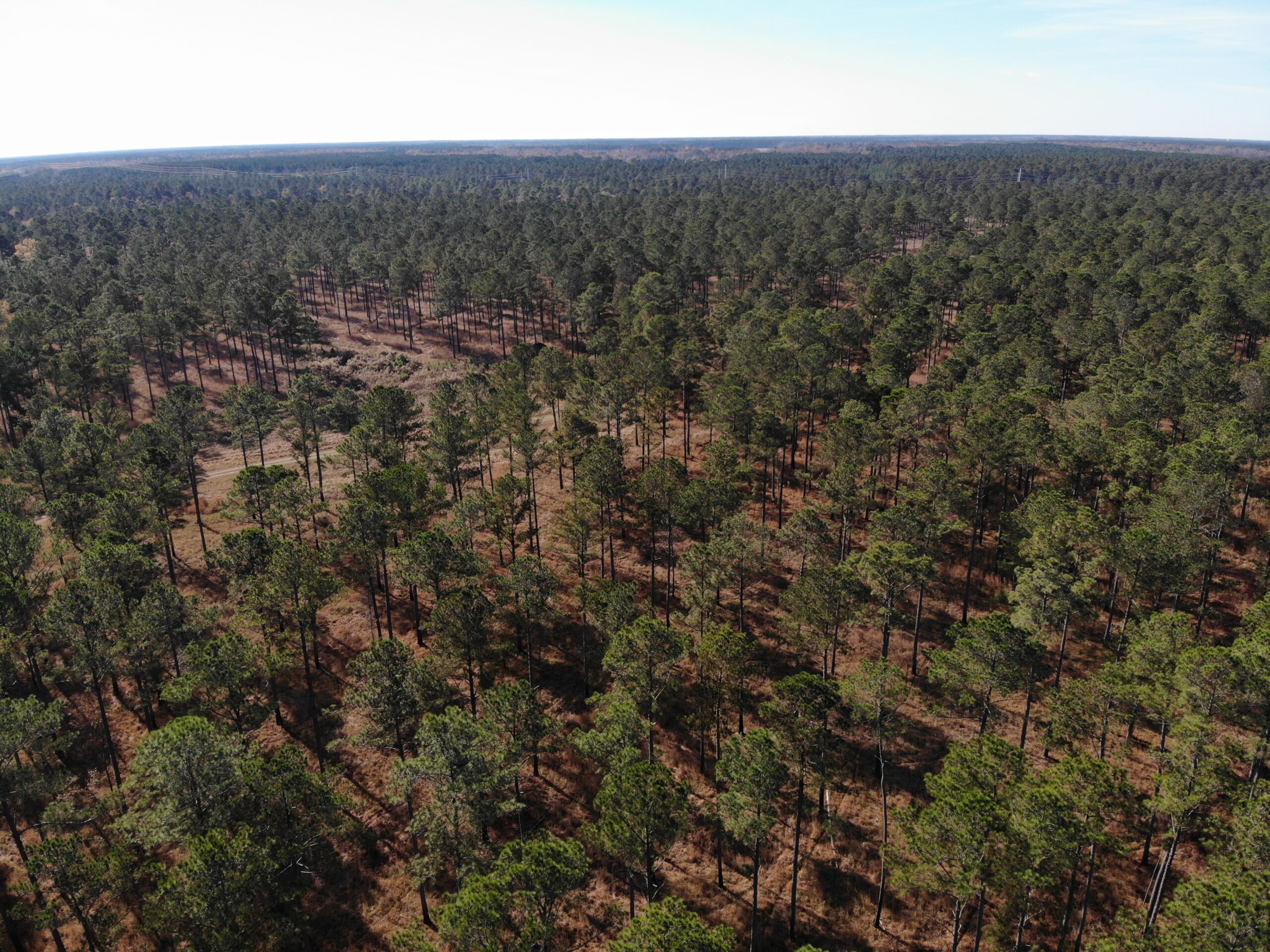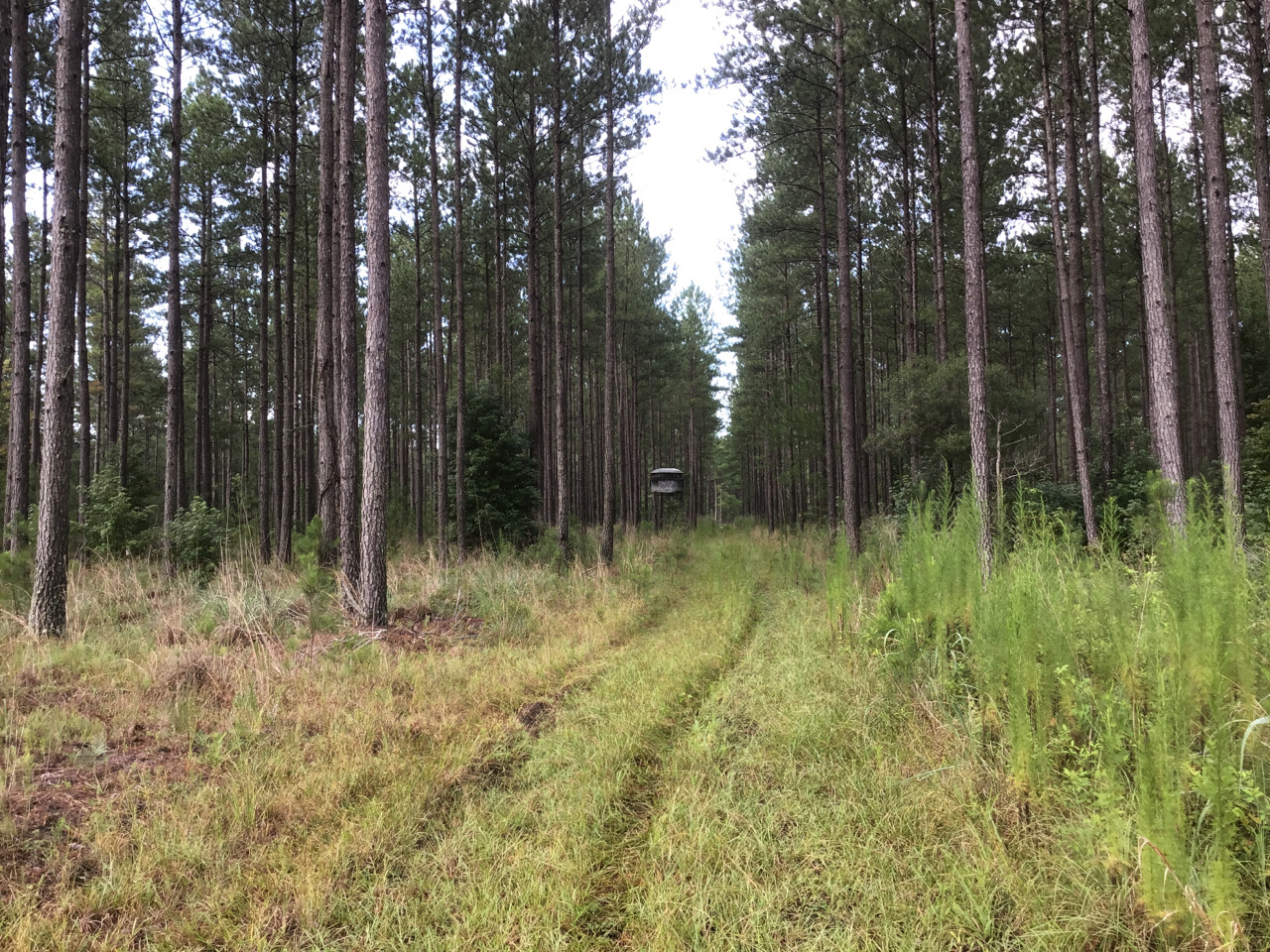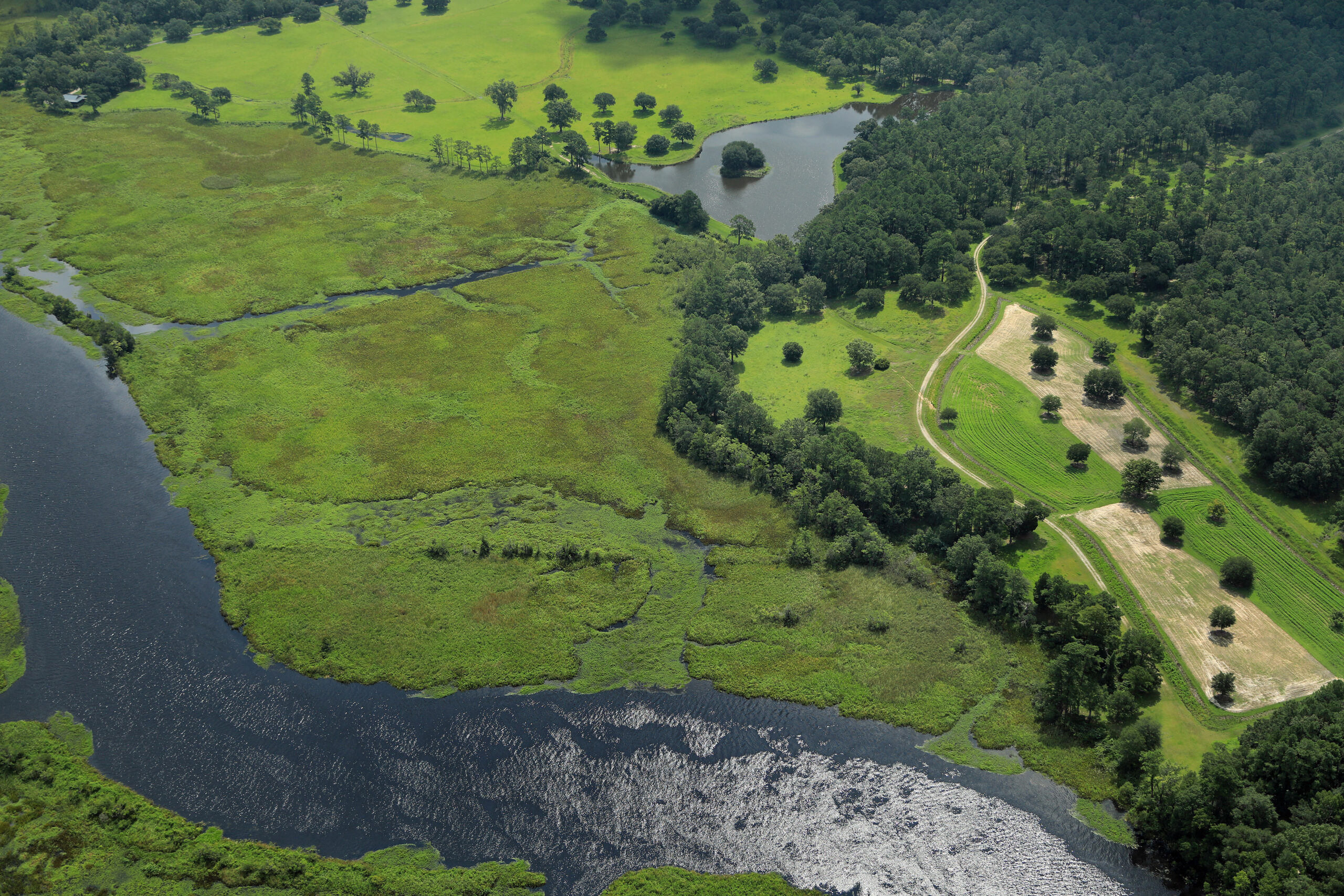At the Land Trust, we are proud of how our work is in direct harmony with the culture and activity of the Lowcountry. By preserving land we also preserve the integrity of our wildlife, agriculture, and economy. Conservation is a full circle practice and we are lucky to live in a place where the locals understand that need for that all-hands-on-deck kind of effort.
This month, in celebration of the fall season, we spoke with Joe Hamilton; wildlife biologist and founder of the Quality Deer Management Association, and Matt Lee; author, entrepreneur, and all-around Lowcountry foodways expert, about how conservation works in tandem with the efforts of hunters and farmers to nurture the Lowcountry landscape, wildlife, and culture.
JOE HAMILTON

In 1988, Joe Hamilton, a wildlife biologist by trade and lifelong hunter, saw a need for better deer management, so he started the Quality Deer Management Association (QDMA) in South Carolina. At that time, the deer population was growing out of hand, and Joe feared negative effects on the Lowcountry wildlife and ecology as a whole. “When your deer population gets to that level, a lot of different species of wildlife are suffering, not only the deer themselves. They completely remove the habitat, feeding and nesting, for a lot of the neotropical migrating birds and even resident songbirds. It changed the landscape in a negative way.”
Joe knew in the late ‘80s that the Lowcountry was the right place to start a movement like this. “In some places, it’s a sport, but here it’s a lifestyle,” says Joe. “Deer hunting, especially in the Eastern portion of South Carolina with the longest season, is more family-oriented and I see a lot more youngsters involved in hunting proportionately here than anywhere else I travel.”
Within a year, Joe and other members of the QDMA saw the need to take the group nationwide. That was the beginning of a decades-long deer hunter education process that still lives on today with the National Deer Association (NDA).
“The educational process takes a long time, but through this quality deer management movement we were able to educate masses of hunters,” says Joe. It’s this education that was the key to the QDMA’s success. Joe says the hunters saw the need for change and welcomed the education.
The effects of the Quality Deer Management education program were seen clearly in recovering deer populations in the late ‘90s and, in recent years, in a study funded by the QDMA conducted by the University of Georgia. The study was to “determine usage of wildlife openings by neotropical migrating birds as well as resident songbirds. The study involved properties all the way from the Gulf of Mexico to Canada.” Joe says they saw “exactly what [they] expected. There was a tremendous increase in habitat utilization by those species of birds in areas that had been managed specifically for deer, but indirectly for all of these other birds and small mammals. That was true all the way from the Gulf to the Canadian border.”
This relationship between deer management and overall wildlife health is what Joe is most proud of. “You can thank deer hunters for the species, diversity, and abundance of birds you see in your backyard,” says Joe.
“To quote my mentor Aldo Leopold; ‘Conservation is a state of harmony between man and land’, and we were able to bring about that state of harmony through education. I couldn’t be happier about what’s happened with wildlife management, with deer being the focus, but all of these other species are beneficiaries as well.”
MATT LEE

Matt Lee is an author, entrepreneur, Lowcountry foodways expert, and commonly known as one-half of The Lee Bros, but these days he has a new title: Farmer. In October of last year, Matt started farming a 45-acre plot in Legareville on Johns Island. The land had gone unused for nearly a decade, and when a friend asked him to help get the farm back up and running, Matt saw an opportunity to take his connection to food a step further. “Grow it, make a recipe about it, and write about it,” is his newest motivation.
This new venture is a lofty one, and Matt says “45-acres is a burden.” Still, he’s happy to be running a farm that falls in between the small acreage (typically two to three acres) and the larger farms we see increasingly in the middle of the state.. “I think I’ve hit on a solution for that medium-sized acreage, which is to do winter habit cereal grains; wheat, barley, rye, oats–planting in the fall and harvesting in the spring. Then, planting cover crops in the summer. I grew sorghum grain and millet.”
Although farming may be his newest venture, it is one that encompasses a lot of the experience Matt has already gained through his career in food. Matt and his brother Ted have been working with farmers, caterers, event coordinators, the department of agriculture, and all kinds of groups for years. They have seen first-hand how the Charleston hospitality industry benefits from agricultural land so close to an urban center.
Now working on the farm, Matt continues to recognize this special connection between land and the Lowcountry. “Conservation on Johns Island matters to me today and has amounted to a great benefit for me because I am able to farm within 25 minutes of my home in suburban West Ashley. That proximity is everything, and I’ve seen how on the neighboring farms they benefit from being able to practice so close to an urban center.” Although Charleston is widely known for its historical and culinary tourism, people often forget about the advantages we have of ecological and agricultural tourism in the Lowcountry.
Matt says, “for example, opportunities for farm visits, dinners at the farm, group visits, activities, and the full spectrum of diversified activities that can happen at a high functioning farm are available to those farms closer into the city because of proximity.”
It’s this proximity, the growing of food so close to the restaurants where it will be cooked, the invitation to a farm to pick berries in the spring that makes the Lowcountry foodways and culture so connected to conservation efforts.
For Matt, who was raised in Charleston, the fear of development is a real one that couples with fear of losing a way of life. As a farmer on Johns Island, he’s aware of the risk “that if you make development based on commute times only and crowd out land uses like agriculture within a reasonable distance of the urban center, you limit the possibilities of agriculture to provide you not just with food but with entertainment, hospitality, and open spaces to go and do things.”
It is the lands, waterways, and culture that make the Lowcountry such a special place to visit, and to Matt, “the best possible outcome for any region is to have diversified uses…We grew up with that in downtown Charleston.” It is these diversified uses that make Charleston not only a special place to live but a special place to visit. “We travel to experience new feelings, new emotions, and new ideas. We don’t go there to have exactly what we have back home.”





